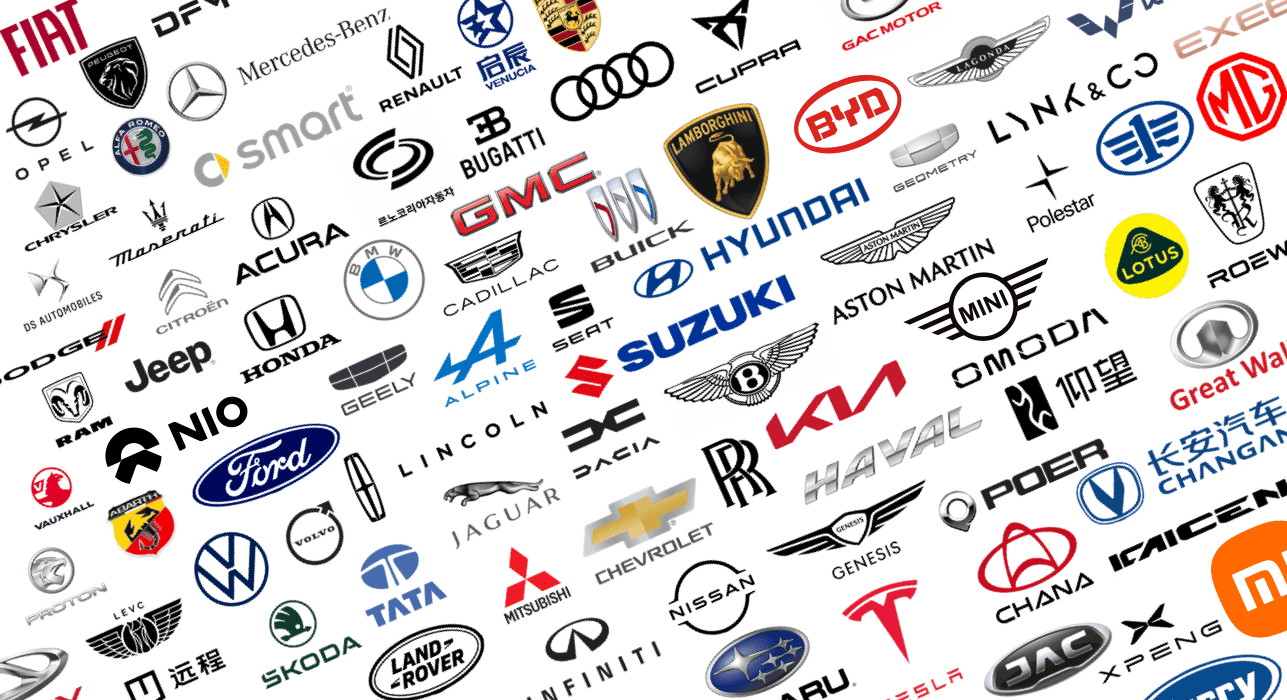Automotive
We specialize in ensuring your automotive products meet stringent regulatory standards for global market access
Automotive product testing
From concept to production, we provide tailored guidance to address industry-specific requirements such as electromagnetic compatibility (EMC), wireless connectivity, and functional safety. Our solutions include:
- EMC and RF Testing: Ensuring your automotive electronics meet regulatory requirements for electromagnetic interference and radio frequency compliance.
- Wireless Connectivity Compliance: Assisting with approvals for IoT-enabled features like vehicle-to-everything (V2X) communication and Bluetooth/Wi-Fi systems.
- Functional Safety Guidance: Supporting compliance with ISO 26262 and other functional safety standards to ensure the safety of your automotive systems.
- Global Market access: Providing expertise in global type approval and certification processes, including UNECE regulations.
- Documentation and Technical Files: Preparing and reviewing the necessary documentation to streamline approvals and audits.
Our solutions are designed to help you integrate innovative technologies into your vehicles while staying compliant with international regulations, ensuring a smooth path to market success.
How we helped our client

Challenge
A leading supplier of communication units for the automotive industry needed global type approvals for Radio, EMC, and Safety compliance. Their modules are integrated into vehicles by major car manufacturers, which meant certification was critical for market access and OEM trust. The biggest challenge was that each country applied different requirements for testing, frequency settings, and device configurations. Without alignment, the risk of non-acceptance by local regulators was high, creating the possibility of delays, extra testing cycles, and costly redesigns. To address these complexities, the company turned to IoT Consulting Partners to manage the approvals process, guide compliance, and coordinate communications with local authorities.
Outcome
Through our expertise and regulatory networks, IoT Consulting Partners delivered: Radio, EMC, and Safety testing coordination across North America, Europe, and Asia. Debugging and technical consultancy to adapt the devices’ settings for compliance with local requirements. Direct communication and negotiation with local regulators, ensuring acceptance of justifications and avoiding unnecessary redesign. Global approval strategy, ensuring timely certification for multiple markets under a unified approach. As a result, the communication units were successfully certified and approved worldwide, enabling the client to deliver fully compliant and future-ready connectivity solutions to their automotive partners. The structured approach — combining technical debugging, regulatory expertise, and direct engagement with authorities — ensured compliance was achieved efficiently, with no costly delays or hidden surprises.
Essential requirements under the RED (2014/53/EU) and the standards that ensure compliance:
Note: For conformity assessment under the RED (2014/53/EU) and related directives, the *latest versions of harmonized standards* as published in the Official Journal of the European Union (OJEU) shall always be applied.
Article 3.2 Radio; efficient use of the radio spectrum.
| Standard | Description | Technology / Devices |
|---|---|---|
| EN 300 220 | Short Range Devices (SRD) operating in the frequency range 25 MHz to 1 000 MHz | Short Range Devices (e.g. 434 MHz, 868 MHz) |
| EN 300 328 | Wideband transmission systems; Data transmission equipment operating in the 2,4 GHz band | Bluetooth, Bluetooth Low Energy, WLAN, Zigbee, Kleer etc. |
| EN 300 330 | Short Range Devices (SRD); Radio equipment in the frequency range 9 kHz to 25 MHz and inductive loop systems in the frequency range 9 kHz to 30 MHz | Short Range Devices (e.g. Immobilizer, NFC...) |
| EN 300 440 | Short Range Devices (SRD); Radio equipment to be used in the 1 GHz to 40 GHz frequency range | Short Range Devices, WLAN 5 GHz (Band 4) |
| EN 301 091 | Short Range Devices; Transport and Traffic Telematics (TTT); Radar equipment operating in the 76 GHz to 77 GHz range | 76/77 GHz Radar Devices |
| EN 301 511 | Global System for Mobile communications (GSM); Mobile Stations (MS) equipment | GSM Devices (e.g. Mobile Phones, Cellular) |
| EN 301 893 | 5 GHz RLAN | WLAN 5 GHz (Band 1-3) |
| EN 301 908-1 | IMT cellular networks | 3G / LTE Devices (e.g. Mobile Phones, Cellular) |
| EN 302 065 | Short Range Devices (SRD) using Ultra Wide Band technology (UWB) | UWB Devices (UWB location tracking / UWB devices for ground based vehicular applications) |
| EN 302 208 | Radio Frequency Identification Equipment operating in the band 865 MHz to 868 MHz with power levels up to 2 W and in the band 915 MHz to 921 MHz with power levels up to 4 W | RFID Devices |
| EN 302 264 | Short Range Radar equipment operating in the 77 GHz to 81 GHz band | Short Range Devices / Road Transport and Traffic Telematics (RTTT) / Short Range Radar equipment |
| EN 302 372 | Short Range Devices (SRD); Tank Level Probing Radar (TLPR) equipment operating in the frequency ranges 4,5 GHz to 7 GHz, 8,5 GHz to 10,6 GHz, 24,05 GHz to 27 GHz, 57 GHz to 64 GHz, 75 GHz to 85 GHz | Tank Level Probing Radar (TLPR) |
| EN 302 729 | Short Range Devices (SRD); Level Probing Radar (LPR) equipment operating in the frequency ranges 6 GHz to 8,5 GHz, 24,05 GHz to 26,5 GHz, 57 GHz to 64 GHz, 75 GHz to 85 GHz | Level Probing Radar (LPR) |
| EN 302 852 | Road Transport and Traffic Telematics (RTTT); Automotive radar equipment operating in the 24,05 GHz up to 24,25 GHz or 24,50 GHz frequency range | 24 GHz Automotive Radar Equipment |
| EN 302 858 | Short Range Devices; Transport and Traffic Telematics (TTT); Radar equipment operating in the 24,05 GHz to 24,25 GHz or 24,05 GHz to 24,50 GHz range | 24 GHz Radar Devices |
| EN 303 345 | Broadcast Sound Receivers | Broadcast Sound Receivers (AM/FM/DAB/DRM) |
| EN 303 406 | Short Range Devices (SRD); Social Alarms Equipment operating in the frequency range 25 MHz to 1 000 MHz | Short Range Devices (SRD); Social Alarms Systems |
| EN 303 413 | Satellite Earth Stations and Systems (SES); Global Navigation Satellite System (GNSS) receivers; Radio equipment operating in the 1 164 MHz to 1 300 MHz and 1 559 MHz to 1 610 MHz frequency bands | GNSS Receivers (GPS, BeiDou, GLONASS, SBAS) |
| EN 303 417 | Wireless power transmission using technologies other than radio frequency beam in the 19-21 kHz, 59-61 kHz, 79-90 kHz, 100-300 kHz, 6765-6795 kHz ranges | Wireless Chargers |
| EN 305 550 | Short Range Devices (SRD); Radio equipment to be used in the 40 GHz to 246 GHz frequency range | Ultra Wide Band (UWB) |
Article 3.1(b) EMC; Adequate level of electromagnetic compatibility.
| Standard | Description | Technology / Devices |
|---|---|---|
| EN 301 489-1 | Part 1: Common technical requirements | - |
| EN 301 489-2 | Part 2: Specific conditions for radio paging equipment | Paging Devices |
| EN 301 489-3 | Part 3: Specific conditions for Short-Range Devices (SRD) operating on frequencies between 9 kHz and 246 GHz | Short Range Devices |
| EN 301 489-17 | Part 17: Specific conditions for Broadband Data Transmission Systems | Bluetooth, Bluetooth Low Energy, WLAN, Zigbee, Kleer etc. |
| EN 301 489-19 | Part 19: Specific conditions for Receive Only Mobile Earth Stations (ROMES) operating in the 1,5 GHz band providing data communications and GNSS receivers operating in the RNS | GNSS Receivers (GPS, BeiDou, GLONASS, SBAS) |
| EN 301 489-33 | Part 33: Specific conditions for Ultra-WideBand (UWB) devices | Ultra Wide Band (UWB) |
| EN 301 489-51 | Part 51: Specific conditions for Automotive, Ground based Vehicles and Surveillance Radar Devices using 24,05 GHz to 24,25 GHz, 24,05 GHz to 24,5 GHz, 76 GHz to 77 GHz and 77 GHz to 81 GHz | Radar Devices |
| EN 301 489-52 | Part 52: Specific conditions for Cellular Communication User Equipment (UE) radio and ancillary equipment | Cellular Devices (GSM/UMTS/LTE) |
| EN 55032 | Electromagnetic compatibility of multimedia equipment – Emission requirements | Multimedia Equipment, Broadcast Receivers |
| EN 55035 | Electromagnetic compatibility of multimedia equipment — Immunity Requirements | Multimedia Equipment, Broadcast Receivers |
